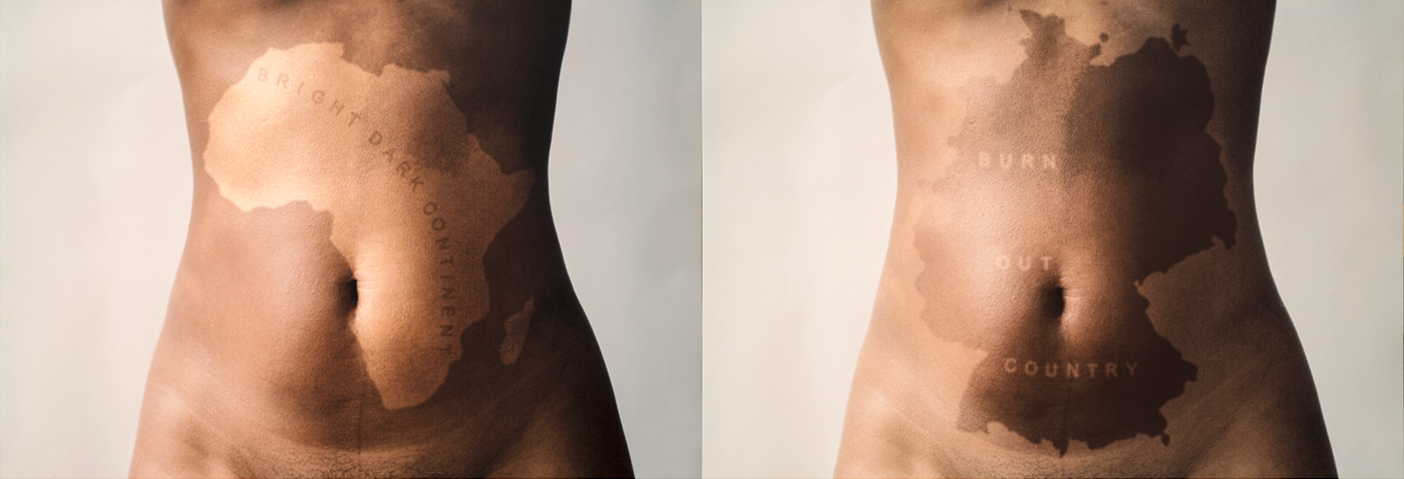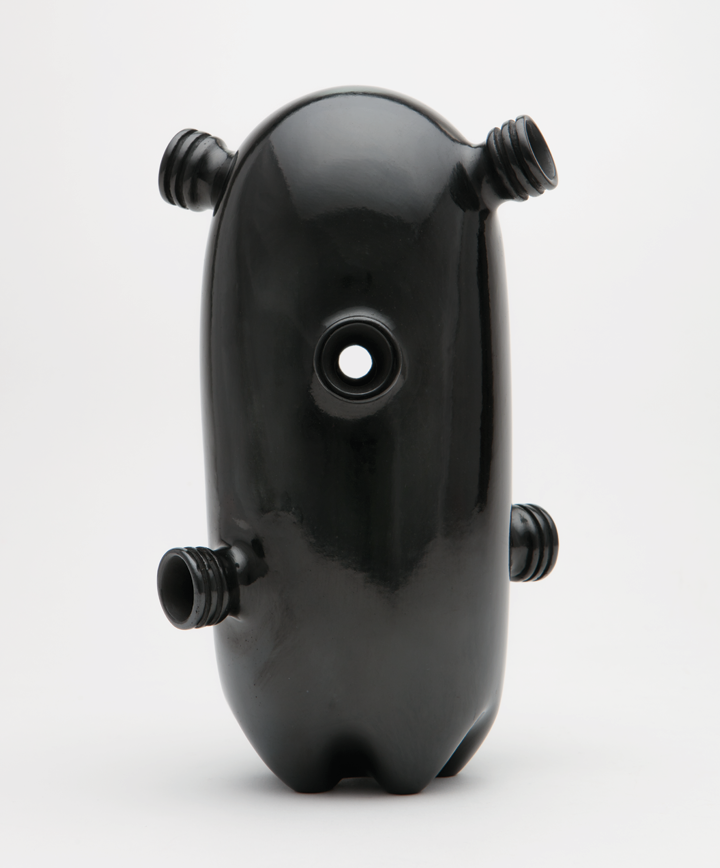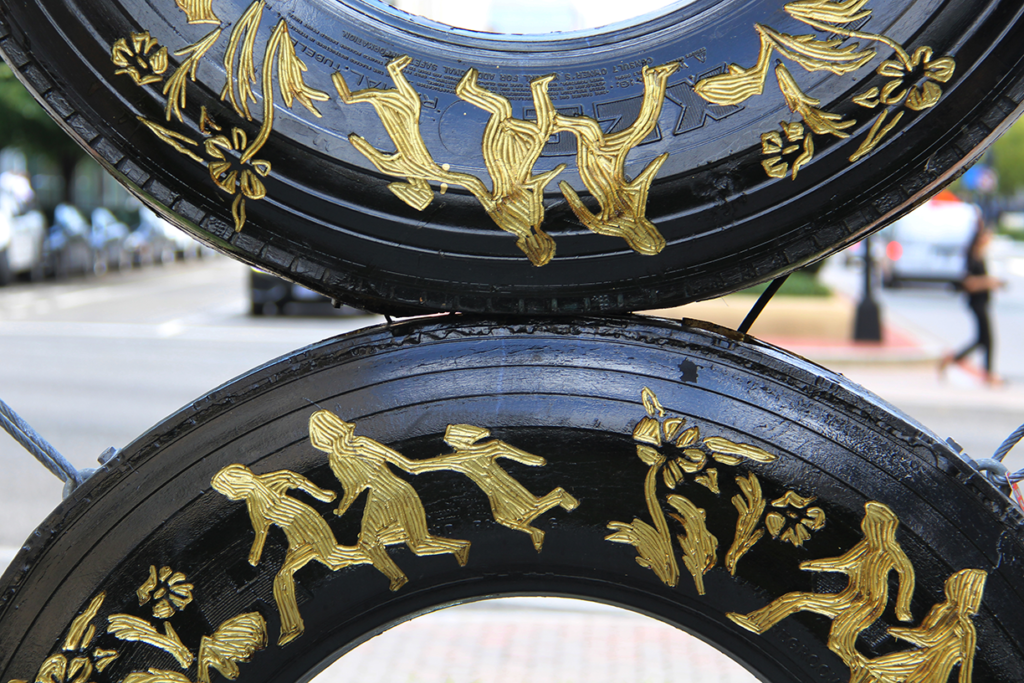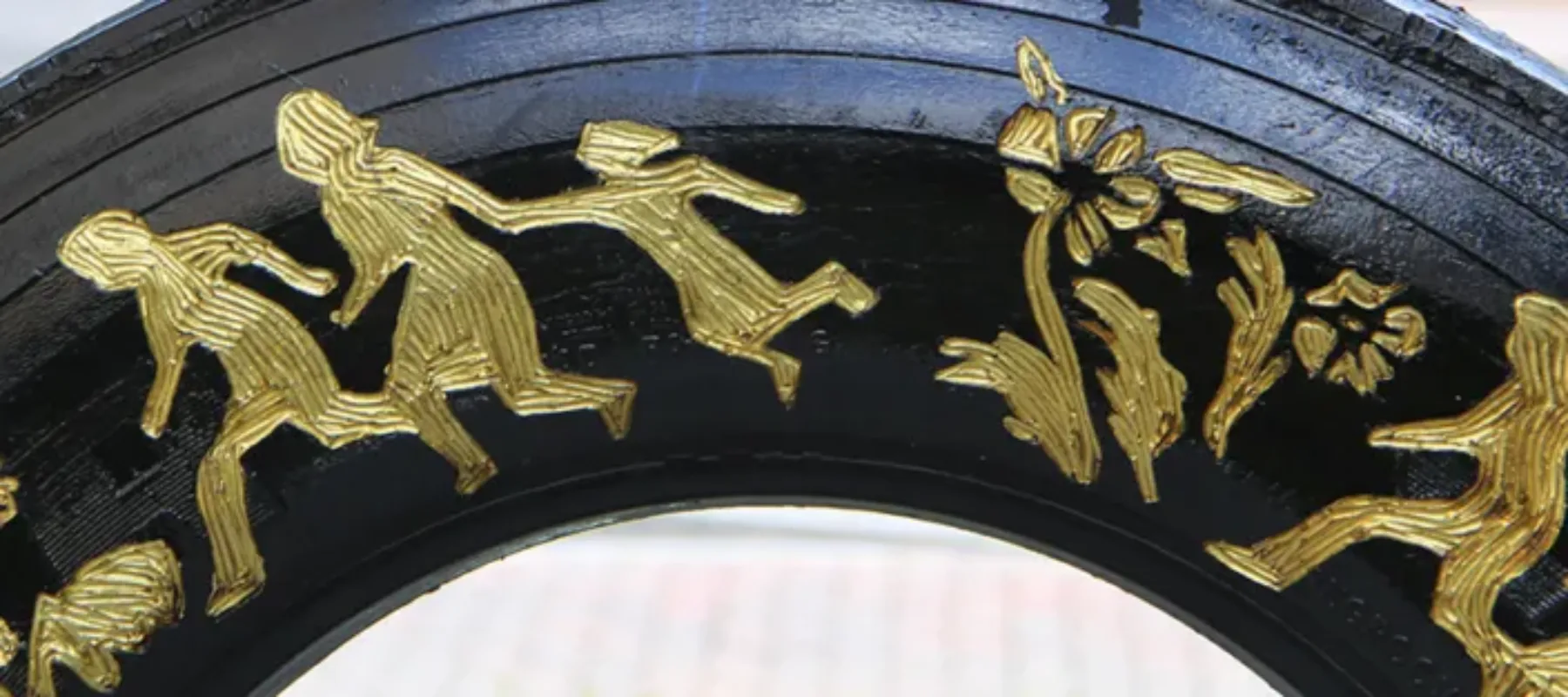At first glance, it might be difficult to identify common threads in works by Ingrid Mwangi, Jami Porter Lara, and Betsabeé Romero. Each artist uses vastly different materials—the female body, plastic water bottles, and recycled tires—to address the challenging subject of migration. Through their art, these women are engaging with topical and consequential issues.

Born to a Kenyan father and a German mother, Ingrid Mwangi of the collective Mwangi Hutter describes being seen as white while living in Africa, but seen as black after immigrating to Germany. She used her body to call attention to issues of migration and racism in her 2001 photo diptych Static Drift, featured in NMWA’s collection. Two photographs show her torso as a canvas. She used stencils and sunlight to create her subject: in one, darker skin surrounds the shape of Africa with the words “Bright Dark Continent,” while in the other, lighter skin surrounds the shape of Germany with the words “Burn Out Country.”

While Porter Lara was exploring a remote stretch of the U.S.–Mexico border, she saw discarded plastic water bottles that had been carried by migrants. She also encountered the remains of similarly discarded items: pot shards from ancient cultures. This juxtaposition inspired Porter Lara, based in Albuquerque, New Mexico, to consider the distinction between artifact and trash. Her thinking about how the plastic bottle might be seen as a “contemporary artifact” led to the creation of her ceramic vessels, which were recently on view in the NMWA exhibition Border Crossing.
Mexico City-based Romero embraces materials and techniques related to popular culture. She frequently transforms automotive components because cars have a broad cultural appeal. Four newly commissioned works are now on view outside the museum in the New York Avenue Sculpture Project, the only public art space in Washington, D.C., featuring rotating installations of contemporary work by women artists. Romero’s carved and painted tires symbolize humankind’s profound connection to cultural traditions, as well as a yearning to keep families safe and thriving. The car-based imagery and themes of migration and movement resonate with the hum of activity at this busy D.C. intersection.

Be it body, bottle, or tire, these three artists have found their artistic vehicles and used them to convey an intimate understanding of issues that affect our world. From migration to racism to identity, the symbolic content makes connections for viewers and elevates their work. They see a bigger picture outside themselves, and their powerful ideas implore viewers to ask questions.
